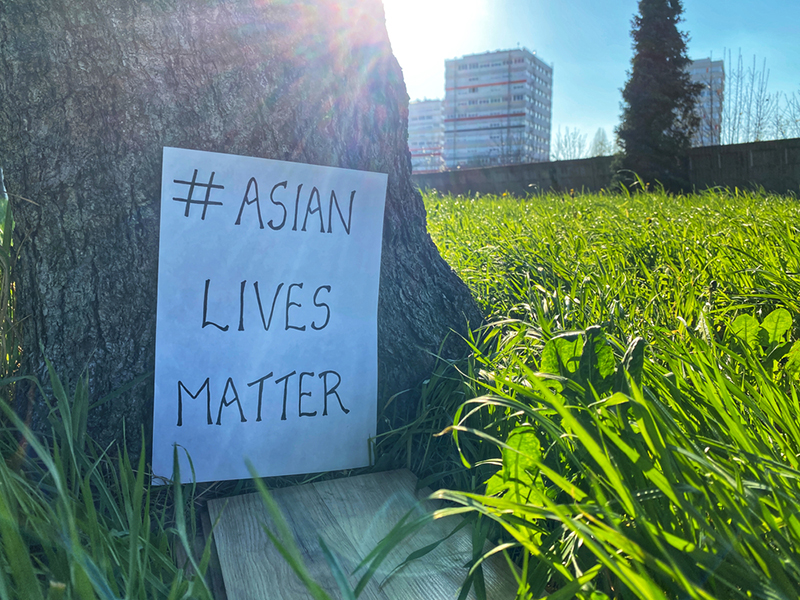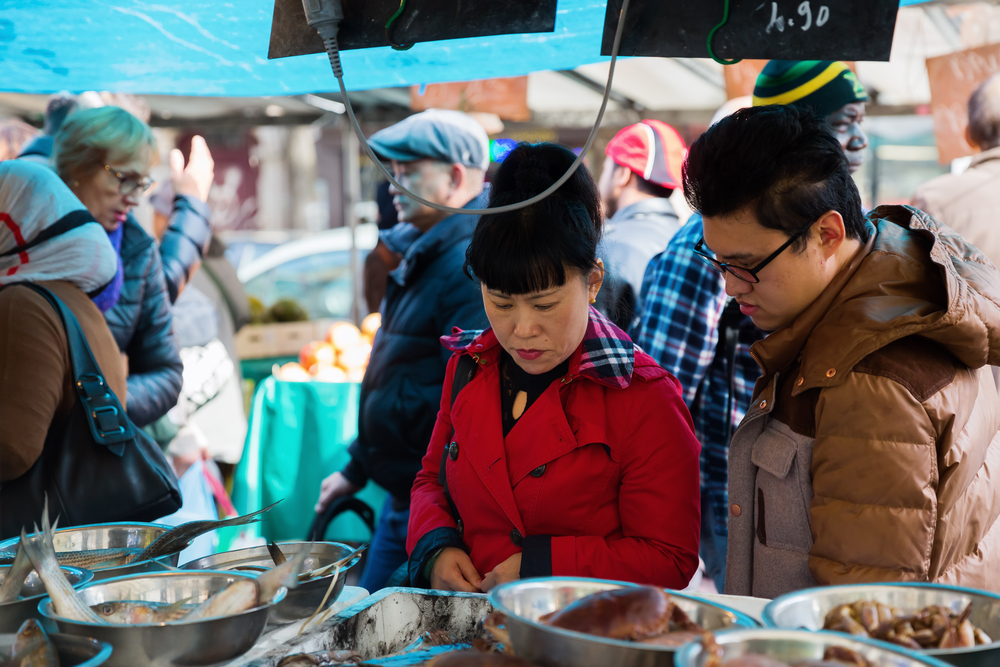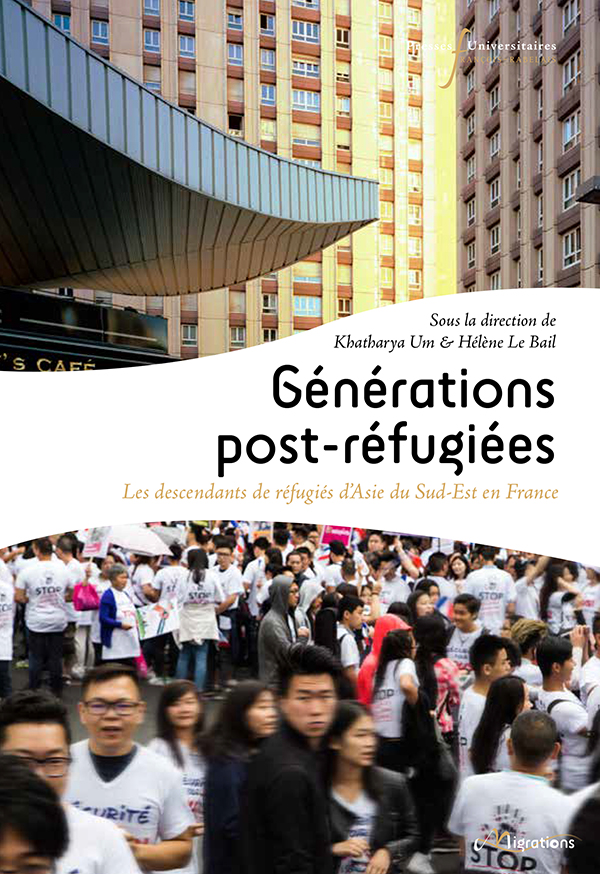Who Are the Descendants of South-East Asian Refugees in France Today? Interview with Hélène Le Bail

Hélène Le Bail and Khatharya Um have recently coedited Générations post-réfugiées. Les descendants de réfugiés d’Asie du Sud-Est en France (Post-refugee generations.The descendants of South-East Asian refugees in France), published by the Presses universitaires François Rabelais. This book initiates a dialogue on issues of identity, representation, citizenship, belonging, and mobilisation of South-East Asians in France, some fifty years after the first refugees of South-East Asian origin arrived in the country. Through an original and sensitive approach, the two coeditors have managed to bring together different scientific, literary, and artistic perspectives. Hélène Le Bail answers our questions about the book.
Can you tell us about the background to the book and how it came about?
This book was born out of my meeting with Khatharya Um, Associate Professor of Ethnic Studies and Associate Dean of the Social Sciences Division at the University of California, Berkeley, specialising in studies of exile, refugees, and, in particular, Cambodians in the United States. Khatharya has also developed a field of study in France, and she contacted me four years ago about organising a conference on South-East Asian refugees and particularly their descendants. It was from this conference, held at Sciences Po in 2018, that the idea of publishing a collective work was born.
You say you wanted to make up for the lack of research and literature on people of South-East Asian descent in France...
It is true that there is a dearth of academic research on the descendants of refugees from South-East Asia, but also on the refugees themselves. There is some work on the descendants of Chinese immigrants, but very little on the descendants of Cambodians, Vietnamese, and Laotians, who come from three countries linked to French colonial history.
Research was carried out on these refugees when they arrived in France in the 1970s and 1980s. A number of publications and surveys were produced focussing on their arrival and the period immediately following their arrival. Then there was a sort of void. It was during this gap that the children were born, grew up, and had children of their own. We have now reached the third generation. There is very little research into their emotions, their place in society, and their personal paths.

Belleville market in Paris, France, October 2026.
Photo by Christian Mueller for Shutterstock.
In this book you encourage interdisciplinary cooperation between scholars and the various stakeholders in the field (artists, associations, journalists, etc.). Can you tell us a little about how you went about this work, and tell us about critical refugee studies and how the book fits in with this (rather new) trend?
Our approach, which we call the critical approach to refugee studies, is above all one developed by Khatharya Um. My colleague inspired me and convinced me of both the scientific interest and the ethical value of such an approach. First and foremost, it involves cooperation between researchers and the various people concerned. It means putting the people’s voice back at the heart of research and at the heart of the way research results are disseminated, integrating them into the construction of the discourse that concerns them and into the construction of the actual research work. We have not set out to do research together yet, we would like to do it, but maybe that’s something for the future.
At this stage, we have worked with a diversity of contributors and we are publishing a collective book that presents and puts forth a multitude of voices, the voices of people who do not necessarily agree with each other; we want to give a place to each of these voices, those of artists, researchers, journalists, and community workers.
We also wanted to write and publish differently: the book contains not only interviews and essays, but also artistic productions, notably extracts from plays and poetry. There are other forms of expression that we were unable to include in the book—audiovisual forms—but to which we refer in the book by means of QR codes that allow readers to continue their exploration by visiting websites.
In this sense, our approach is a critical approach to refugee studies in that we have been very careful to put the voices of the people affected at the very heart of our writing.
You mention that there has been an upsurge in xenophobic acts and remarks against people of Asian origin in France and the fact that they are seen as a model minority, which not only places a burden on these people but also gives the (somewhat false) image of a France that knows how to welcome and integrate migrants. Are these some of the things you have observed? Can you tell us a bit more about them?
 The first part of our book sets out to reflect on the stereotypes we have about the population of Asian origin in France and the stereotypes we reproduce in our research, namely that we are looking at a population that is a model in terms of integration and that also suggests that France is a model host country, that it has welcomed South-East Asian refugees successfully.
The first part of our book sets out to reflect on the stereotypes we have about the population of Asian origin in France and the stereotypes we reproduce in our research, namely that we are looking at a population that is a model in terms of integration and that also suggests that France is a model host country, that it has welcomed South-East Asian refugees successfully.
We have come to question what it means to be a model minority: why build a model population category? What does this mean for refugees? Is this necessarily a positive thing, or can it be just as deleterious as other forms of stigmatisation and simplification? For example, take the common idea of the good Asian pupil who does well at school. How do those who struggle at school experience this stereotype? Aren’t they under a lot of social pressure? What is the significance of this idea that immigrants of Asian origin integrate well? Will the children of these people feel strong social pressure not to deviate from this image of the good immigrant?
What is more, apart from the impact on the people concerned, doesn’t this convey a false image of France as a country that open-heartedly welcomed immigrants in the 1970s and 1980s? Is it possible to question this image? Finally, we might ask what it means to describe one section of the population as a model group. What are the effects on other groups? Doesn’t it devalue other groups in the immigrant or refugee population?
All these questions are explored in the various chapters of the book. We don’t necessarily provide all the answers, but at least we challenge certain ideas.
The descendants of refugees have a different experience to that of their parents. You say that they hardly speak their parents’ language and that they are perfectly integrated into French society...
We wanted to emphasise two things. In the book, a number of contributions explore memory and the transmission of memory, in particular with the concept of post-trauma developed by Khatharya Um and others, according to which the children of immigrants or the children of exiles, particularly when a situation of violence exists at the outset, will experience trauma and violence even if not directly. They will nevertheless inherit it in their families.
Our focus is on the way in which they experience their family history and the trauma, which very often takes place in the silence of the family, the desire not to hurt the parents, but also the need of the children to understand what has happened and what they have silently inherited from their parents. This discussion of the relationship between parents and children, of transgenerational reflection and what it means to be the child of exiles forms the first part of the book.
The second part of the book offers a different approach to the question of generational difference. We don't look at the difference in the relationship between parents and children with regard to history, but rather at the link between the children and French society or the nation. We discuss forms of claims, citizenship, and recognition that are completely different from those experienced by their parents, due to the fact that they were born here or at least arrived in France when they were very young. It is the country where they grew up, and which constitutes the essence of their national and civic identity. We therefore question the difference between generations in terms of citizenship and national identity.
Interview by Corinne Deloy.
English version by Miriam Périer and Caitlin Gordon Walker.
Cover photo ("Asian Lives Matter"), by AmateurTraveller, for Shutterstock.
Watch the vidéo of the book launch Générations post-réfugiéesorganised at the Médiathèque Jean-Pierre Melville (Paris, 13e arrondissement), chaired by Julie Hamaïde, founder of Koï










